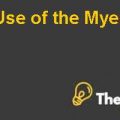
CHESTNUT FOODS Case Solution
Problem Diagnosis
The stock market performance of the Chestnut Foods Company has been declining and the main division contributing to this low stock market performance is the instruments division of the company. The company is basically a conglomerate which consists of two divisions which are the instruments and the food processing division of the company.
One of the activist investor of the company demands the sale of the instruments division of the company however; this is in contrast to the long term growth plans for expansion and turnaround for the instruments division of the company. There are also certain other significant issues which need to be resolved in order to determine the actions which could be taken against this activist investor. The company has long been using a constant cost of capital however, the riskiness of investments in both the divisions of the company is different therefore, and the risk adjusted cost of capital for each of the division is also one of the main issues faced by Chestnut Foods Company.
Moreover, the impact of a single hurdle rate and the use of the different risk adjusted hurdle rates for both of the divisions on the valuation of the divisions and the company as a whole also needs to be analyzed and recommendations need to be made. Finally, recommendations also need to be made for dealing with the proposals laid down by Van Muur, the activist investor.
Analysis
A range of issues have been analyzed in order to examine the problem of the company and its separate divisions. These are analyzed below:
Van Muur’s Soliciting Control
Van Muur is has gradually and unexpectedly purchased about 10% of the company. He had done this in order to attack the management of the company and this is proven by the fact that he has demanded the sale of the Instruments division of the company due to the recent decline in the stock market performance.
He had emphasized to sale this division so that the complete focus of the management could be shifted towards the foods processing division of the company. Moreover, Muur was also asserting the right to two seats on the management of Chestnut Foods Company. Muur had quietly and unexpectedly purchased around 10% of the shares of Chestnut Foods Company and this was basically prompted by the depressed share price of the company.
The main reason leading towards the decline of the performance of the instruments division recently might internal issues such as using the same constant cost of capital for the company and both the divisions. These were the main reasons due to which this activist investor was now able to influence the board of Chestnut Foods Company. Therefore, in order to resolve this situation, first of all the internal issues related to risk adjusted weighted average cost of capital need to be resolved first.
Agreement with Meyer’s Assertions regarding Risk Adjusted WACC
The investors who are willing to invest more in the company and value their investments have become savvier and they have all the required information regarding the risk and return and what is happening inside the company. Therefore, overall the investors value the company based upon the weighted average risk which they are exposed to and in such situation the use of the different levels of risk adjusted cost of capitals make the picture more clear for them.
This shows that the assertions as laid down by Meyer and that’s why I am in agreement with his assertions. He is also correct to state the Chestnut Foods Company is playing in different leagues. It is basically a conglomerate and the two divisions of the company and unrelated therefore, the riskiness, the level of the debt, the return requirements for both the divisions would also be different therefore, it is not at all appropriate to use a single constant cost of capital of 7%. Moreover, the intensity of capital and the ability to draw or borrow capital would also be different for both the divisions.................
This is just a sample partial case solution. Please place the order on the website to order your own originally done case solution.













